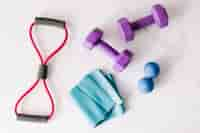
03 Mar Study Helps Explain Why the Less You Exercise The Harder it Becomes
MedicalResearch.com Interview with:
Fiona Bartoli PhD
Leeds Institute of Cardiovascular and Metabolic Medicine
University of Leeds
MedicalResearch.com: What is the background for this study?
Response: Physical activity improves our health and reduces the risk of developing cardiovascular disease, diabetes, depression or even cancer. However, sedentary lifestyles are increasing, and people fail to exercise enough, for reasons such as illnesses, injuries, or computer usage. This puts people at more risk of disease. During physical exercise, the heart beats faster so more blood is pumped through the body. The very large protein called Piezo1 is found in the lining of blood vessels and acts as an “exercise sensor” by detecting the change in blood flow during exercise and acting accordingly.
MedicalResearch.com: What are the main findings?
Response: We have described a new way in which the blood flow sensing role of Piezo1 is connected to the ability to exercise. In our study, we compared two groups of adult mice; one control group and one group with disrupted Piezo1 expression for 10 weeks. We found that these mice without Piezo1 have a striking reduction in walking, climbing and running activities suggesting that Piezo1 is important in sustaining normal physical activity. We also found that these mice were as interested as the control group in exercising, showing no lesser desire. Instead, they were running slower, suggesting a lowered ability to exercise. We discovered that it was due to a reduction in the density of capillaries carrying blood to the muscles. Although the study identified the action of Piezo1 in mice, the Piezo1 protein is also present in humans, indicating that the same molecular mechanism could exist.
MedicalResearch.com: What should readers take away from your report?
Response: We suggest that deactivating Piezo1 impacts physical performance by reducing the capillary density in muscles. This restricted blood flow means activity becomes more difficult, causing further inactivity and leading to a downward spiral. It helps to explain the biology of why exercise becomes harder the less you do. Keeping our Piezo1 proteins active by exercising may be crucial in our physical performance and health.
MedicalResearch.com: What recommendations do you have for future research as a result of this work?
Response: Our discovery provides an opportunity to think about how loss of muscle function could be treated in new ways: if we activate Piezo1, it might help to maintain a normal capillary system and exercise capability. We know that exercise can protect against many conditions so we need to understand how these molecular systems work in detail to be able to develop techniques that can help tackling these diseases.
Disclosures: This study was funded by the British Heart Foundation and the Wellcome Trust.
Citation:
Bartoli F, Debant M, Chuntharpursat-Bon E, Evans EL, Musialowski KE, Parsonage G, Morley LC, Futers TS, Sukumar P, Bowen TS, Kearney MT, Lichtenstein L, Roberts LD, Beech DJ. Endothelial Piezo1 sustains muscle capillary density and contributes to physical activity. J Clin Invest. 2022 Mar 1;132(5):e141775. doi: 10.1172/JCI141775. PMID: 35025768.
[wysija_form id=”3″]
[last-modified]
The information on MedicalResearch.com is provided for educational purposes only, and is in no way intended to diagnose, cure, or treat any medical or other condition. Always seek the advice of your physician or other qualified health and ask your doctor any questions you may have regarding a medical condition. In addition to all other limitations and disclaimers in this agreement, service provider and its third party providers disclaim any liability or loss in connection with the content provided on this website.
